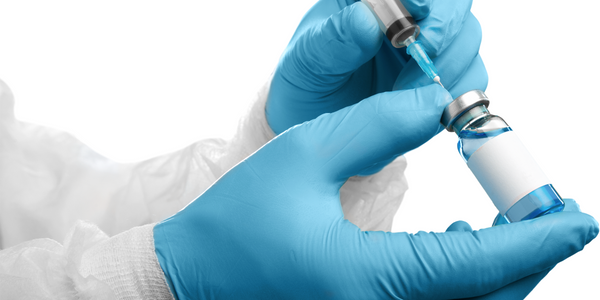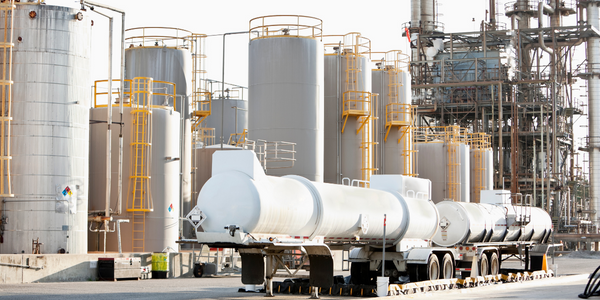Customer Company Size
Large Corporate
Region
- America
- Europe
Country
- United States
- Brazil
Product
- Blue Yonder’s transportation management
Tech Stack
- Data tracking
- Geo mapping
Implementation Scale
- Enterprise-wide Deployment
Impact Metrics
- Cost Savings
- Customer Satisfaction
- Productivity Improvements
Technology Category
- Platform as a Service (PaaS) - Connectivity Platforms
Applicable Industries
- Pharmaceuticals
Applicable Functions
- Logistics & Transportation
Use Cases
- Supply Chain Visibility
- Transportation Simulation
Services
- System Integration
About The Customer
Bayer is a multinational pharmaceutical and life sciences company and one of the largest pharmaceutical companies in the world. Headquartered in Leverkusen, Germany, Bayer's areas of business include pharmaceuticals; consumer health; crop science and animal health. The company is a renowned innovator in the healthcare and agriculture sectors. Bayer's products and services are designed to benefit people by supporting efforts to overcome the major challenges presented by a growing and aging global population. The company is committed to the principles of sustainable development, and the Bayer brand stands for trust, reliability, and quality throughout the world.
The Challenge
Bayer, formerly Monsanto, identified the need to standardize its end-to-end transportation processes globally, which previously followed different practices across operating regions. The company's logistics processes required responsiveness to meet time-sensitive customer demands, a pressure that was intensified by the company’s continuing growth in its global markets. The critical need for standardization paired with seasonality challenges, road transportation challenges and lacking adequate tools and processes to provide visibility into logistics raised awareness around the need for a complete digital logistics overhaul. Bayer’s goal was to improve the customer experience that could consistently provide better information to their customers, while staying efficient.
The Solution
Bayer integrated Blue Yonder’s transportation management capabilities to modernize end-to-end logistics operations by optimizing costs via route consolidation and load optimization and industry-leading practices in supplier bidding and carrier contract management. Advanced technologies allowed Bayer planners to leverage new capabilities in mobility, data tracking and geo mapping, increasing their ability to make real-time decisions that maximize responsiveness. The transportation management platform, along with updated business practices, helped Bayer improve asset utilization by maximizing truck capacity and eliminating 1.4 million miles traveled by vehicles in Brazil alone, reducing their carbon footprint around the globe. Integrations with track and trace platforms provide real-time delivery information so customer service teams can answer questions in a single phone call, or even be proactive if unexpected changes occur to a delivery.
Operational Impact
Quantitative Benefit

Case Study missing?
Start adding your own!
Register with your work email and create a new case study profile for your business.
Related Case Studies.

Case Study
Case Study: Pfizer
Pfizer’s high-performance computing software and systems for worldwide research and development support large-scale data analysis, research projects, clinical analytics, and modeling. Pfizer’s computing services are used across the spectrum of research and development efforts, from the deep biological understanding of disease to the design of safe, efficacious therapeutic agents.

Case Study
Fusion Middleware Integration on Cloud for Pharma Major
Customer wanted a real-time, seamless, cloud based integration between the existing on premise and cloud based application using SOA technology on Oracle Fusion Middleware Platform, a Contingent Worker Solution to collect, track, manage and report information for on-boarding, maintenance and off-boarding of contingent workers using a streamlined and Integrated business process, and streamlining of integration to the back-end systems and multiple SaaS applications.

Case Study
Process Control System Support
In many automated production facilities, changes are made to SIMATIC PCS 7 projects on a daily basis, with individual processes often optimised by multiple workers due to shift changes. Documentation is key here, as this keeps workers informed about why a change was made. Furthermore, SIMATIC PCS 7 installations are generally used in locations where documentation is required for audits and certification. The ability to track changes between two software projects is not only an invaluable aid during shift changes, but also when searching for errors or optimising a PCS 7 installation. Every change made to the system is labour-intensive and time-consuming. Moreover, there is also the risk that errors may occur. If a change is saved in the project, then the old version is lost unless a backup copy was created in advance. If no backup was created, it will no longer be possible to return to the previous state if and when programming errors occur. Each backup denotes a version used by the SIMATIC PCS 7 system to operate an installation. To correctly interpret a version, information is required on WHO changed WHAT, WHERE, WHEN and WHY: - Who created the version/who is responsible for the version? - Who released the version? - What was changed in the version i.e. in which block or module of the SIMATIC PCS 7 installation were the changes made? - When was the version created? Is this the latest version or is there a more recent version? - Why were the changes made to the version? If they are part of a regular maintenance cycle, then is the aim to fix an error or to improve production processes? - Is this particular version also the version currently being used in production? The fact that SIMATIC PCS 7 projects use extremely large quantities of data complicates the situation even further, and it can take a long time to load and save information as a result. Without a sustainable strategy for operating a SIMATIC PCS 7 installation, searching for the right software version can become extremely time-consuming and the installation may run inefficiently as a result.

Case Study
ELI LILLY ADOPTS MICROMEDIA’S ALERT NOTIFICATION SYSTEM
Pharmaceutical production is subject to a strict set of enforced rules that must be adhered to and compliance to these standards is critically necessary. Due to the efforts of WIN 911’s strategic partner Micromedia, Lilly was able to adopt an alarm notification infrastructure that integrated smoothly with their existing workflows and emergency hardware and protocols. These raw energy sources enable the industrial process to function: electricity, WIN-911 Software | 4020 South Industrial Drive, Suite 120 | Austin, TX 78744 USA industrial steam, iced water, air mixtures of varying quality. Refrigeration towers, boilers and wastewater are monitored by ALERT. Eli Lilly identified 15000 potential variables, but limitations compelled them to chisel the variable list down to 300. This allowed all major alarms to be covered including pressure, discharge, quantity of waste water discharged,temperature, carbon dioxide content, oxygen & sulphur content, and the water’s pH.









